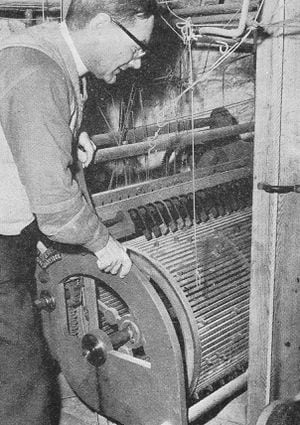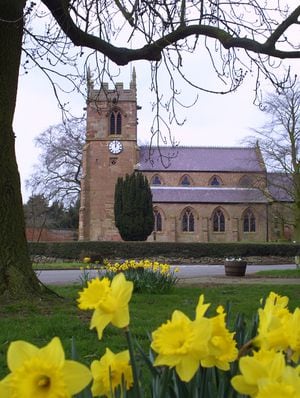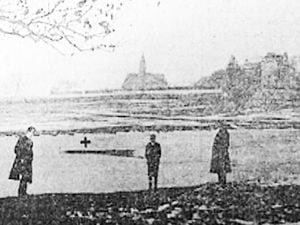Village's mechanical marvel rings a bell in Shropshire
Fifty years ago the peaceful village of Norton-in-Hales was rather more peaceful than it wanted to be.

Nobody was getting to hear "There's Nae Luck About the Hoose When Oor Guid Man's Awa'" any more.
The trouble was that the villagers in north Shropshire were struggling to raise the money to put the carillon – a mechanism to play the bells – back in working order.
So let's delve into the village's misery by drawing on a newspaper story of April 24, 1969, telling of its plight.
By then the carillon at St Chad's Church – dating from the 1860s and an almost unique gem as carillons were usually only installed in large cities and public buildings, and only rarely in parish churches – had been silent for a year.
"A tune was played on the church bells every three hours for 100 years – until a year ago," it said.

"On weekdays the tunes were an old Scots folk song 'There's Nae Luck About the Hoose When Oor Guid Man's Awa',' and 'No Place Like Home.'
"On Sundays the carillon played the popular hymn tune 'We Love the Place o God.'
"Last year the bells were taken down to be recast and the tower was strengthened. This cost the small band of churchpeople £3,697.
"When the bells were rehung they were not put back in their original positions and so the carillon could not be used.
"The church treasurer, Mr Norman Brook, thinks that to get the machinery working again, with electricity instead of the old weights method, would cost about £1,300.
"The Rector of Norton-in-Hales, the Rev H.E. Brown, said that people used to travel quite a distance to listen to the carillon."

It would, the Rev Howard Brown told the newspaper, be a great pity not to see the carillon back in operation. However, he did say the bells were being rung again – no doubt this was being done the traditional manual way using bell ropes, which would have meant the village was missing out on the carillon's tunes.
However, there was to be a happy ending because by early 1974 the carillon was being restored and the bells and carillon were dedicated on Friday, June 15, 1974.
The dedication service was performed by the Bishop of Shrewsbury, the Rt Rev Francis Cocks, and marked the beginning of a festival at the church.
Total cost of the restoration had been over £7,000. The festival included archery, maypole dancing, a concert, and even a blessing for pets. During the event visitors were able to go up the church tower and see the bells and carillon working.
According to the contemporary report in the North Shropshire Journal the bells and the carillon had been silent for about seven years.
By this it surely meant the bells as played by the carillon had been silent, because as we've seen, the rector had indicated in 1969 that the bells were being rung again then.
Every three hours
Today the carillon is still in operation, although it is not working properly.
Current bell captain Jim Vallings can fill in some of the interesting history of St Chad's unusual asset and the family from whom it was a gift.
"The carillon plays a tune every three hours day and night, and it is triggered by the clock," he says.
"First the clock strikes the hour and then the carillon plays its tune. It has been in almost continuous operation since both clock and carillon were installed in 1868, although the carillon was silenced by government order for the duration of World War Two. After the end of the war, the carillon was repaired and restarted in 1954, and is still going now.
"The clock and the carillon were the gift of Martin Harcourt Griffin of Pell Wall, Market Drayton, to commemorate his father Alfred Griffin, who lived at Brand Hall, Norton-in-Hales, and who died in 1861.
"Martin Griffin was a barrister, and his brother Clifford Griffin, who emigrated to USA, is commemorated at Silver Plume, Colorado, USA, on the gold rush trail, with a prominent statue erected by his fellow miners to commemorate his generosity and the sad story of finding his fiancee dead on the eve of their wedding.
"He was 39 when he died in 1897. Clifford Griffin was the finder of a very rich silver and gold seam called Seven Thirty and it brought him great wealth.
"After his fiancee's sad death he withdrew socially from the other miners and built himself a cabin on the steep mountainside. His sole companion was his violin and at the end of the day its sad music would drift down to the valley below where the other miners gathered to hear him play.
"Clifford Griffin dug his own grave in the rock outside his lonely cabin, and shortly afterwards he shot himself. The statue was erected at the same spot high above Silver Plume, and is much visited today."





